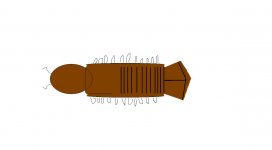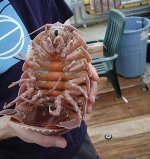L
limestone
New member
- Joined
- Mar 28, 2007
- Messages
- 29
Can you ID this bug? I've found a few of these under rocks on a local spring creek. I looked around troutnut.com couldn't find anything that looked like them. Attached is a (crude) drawing of what they look like to the best of my recollection. I have found have found them in sizes 14 and 16. They have flat, segmented backs, and a tail that reminds me of a lobster's. Obviously, they're brown, but their underside is all white, and they have tons of little white legs. They seem like great trout food.





